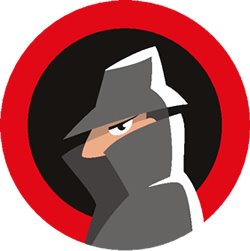Pcqq ransomware (Virus Removal Guide) - Quick Decryption Solution
Pcqq virus Removal Guide
What is Pcqq ransomware?
Pcqq ransomware – a hazardous parasite designed to make you transfer Bitcoins
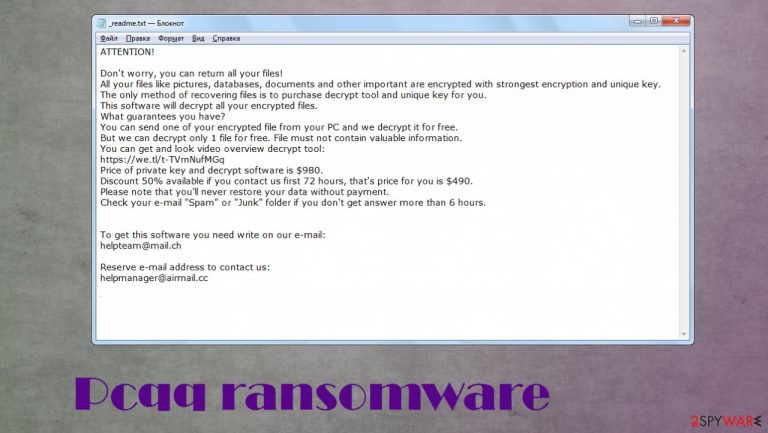
Pcqq ransomware is a file-encrypting computer virus created to infect Windows PCs. When it infects a computer, it immediately starts the encryption process, locking all personal data, such as documents, videos, databases, pictures, etc. As evident, the main goal of criminals is not to compromise your device, so system files are almost not affected. Your files, while locked, can be recovered in some cases for free – our guide is designed to provide you with detailed instructions on how to take actions for the best possible outcome for you.
All encrypted files are appended with a .pcqq extension and are inaccessible until a necessary decryption key or software is used. According to the ransom note titled “_readme.txt” (which can be found on the desktop), the only way to get your data back is to contact the criminals via helpmanager@airmail.cc or helpteam@mail.ch emails and forward the required amount using bitcoin.
The asking price for the decryptor from the assailants depends on how fast you reply. The original price is $980, although it can be reduced to $490, as long as the contact is made within 72 hours of the cyberattack. Interesting fact: cybercriminals rarely change their contact information or the contents of a ransom note, although file extension keeps getting altered with each new version of the virus – this one is 296th already.[1]
Paying the criminals behind Pcqq virus should be the last thought coming to your head. There might be alternative ways to decrypt your files. Emsisoft has been creating free decryption software for Djvu ransomware family victims, to which this file-locking parasite belongs. In this article, we'll walk you through the removal and recovery options.
| name | Pcqq ransomware |
|---|---|
| Type | File-locking parasite, cryptovirus |
| Family | Djvu/Stop ransomware |
| appended file extension | .pcqq |
| Ransom note | _readme.txt is created on the desktop when the encryption is completed |
| Ransom amount | $980/$490 depending on the time users contact these criminals. 72 hours is the time window when extortionists offer the 50% discount |
| Distribution | The virus is mainly spread using pirated software and during the downloads of cracking tools, licensed versions of programs, video games[2] |
| Criminal contact details | helpmanager@airmail.cc, helpteam@mail.ch |
| Elimination | Trustworthy anti-malware software has to be used to remove this cryptovirus from an infected computer |
| System health check | Ransomware is known for altering system files to establish persistence and prolong its unwelcomed stay. Make sure to run FortectIntego to check for alterations and fix possible damage |
This cyber threat is very similar to its predecessors – Rejg virus, Wrui, Lmas, Urnb, and others, in many ways. All of the latest versions use RSA 2048 military strength encoding system, which is very hard to decrypt even for highly experienced professionals.
Also, all most recent versions use random four-letter combinations to append all encrypted data. That's where these cryptoviruses get their names from. Ransom notes slightly differ from time to time, but their main goal is obvious – convince the victim to forward the money.
Various scare and convincing tactics are used for that. First, the assailants assure that only their software is able to decrypt the victim files. Then they offer to send them one encrypted file from the infected PC directly to them via email so they could decrypt it and thus prove that the necessary tool exists.
They also include a link to a video where the victims could see how the required decryption software works in real life. And lastly, they offer a 50% discount for the ransom, as mentioned before. The whole Pcqq ransomware virus note reads:
ATTENTION!
Don't worry, you can return all your files!
All your files like pictures, databases, documents and other important are encrypted with strongest encryption and unique key.
The only method of recovering files is to purchase decrypt tool and unique key for you.
This software will decrypt all your encrypted files.
What guarantees you have?
You can send one of your encrypted file from your PC and we decrypt it for free.
But we can decrypt only 1 file for free. File must not contain valuable information.
You can get and look video overview decrypt tool:
hxxps://we.tl/t-9CYW99VhUR
Price of private key and decrypt software is $980.
Discount 50% available if you contact us first 72 hours, that's price for you is $490.
Please note that you'll never restore your data without payment.
Check your e-mail “Spam” or “Junk” folder if you don't get answer more than 6 hours.To get this software you need write on our e-mail:
helpteam@mail.chReserve e-mail address to contact us:
helpmanager@airmail.ccYour personal ID:
If you decide to pay the criminals and forget about this nightmare, we cannot stop you, but we can advise against that. perpetrators can use that money to develop more advanced ransomware, research new distribution methods, and attack more innocent people. Hence, the cycle of infection continues (keep in mind that the attackers might ask you to pay more after you complete the bitcoin transaction).
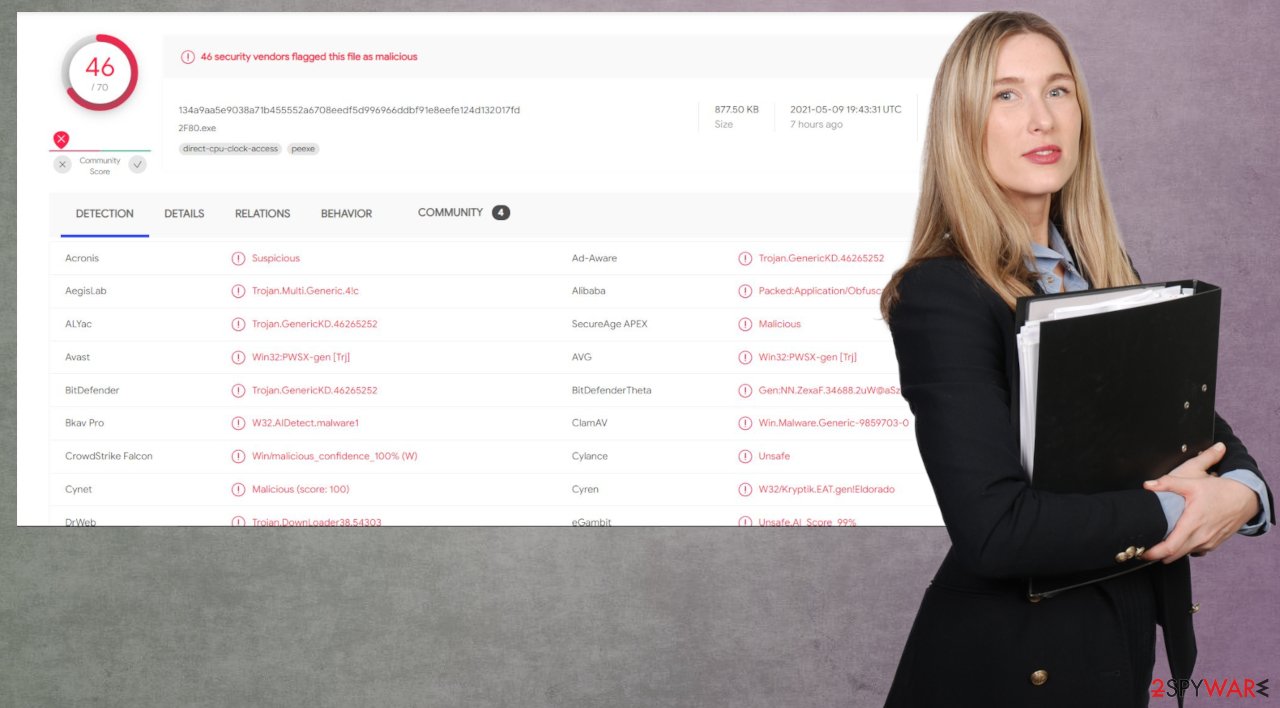
Thus the only reasonable thing to do would be to remove Pcqq virus from your device. Before doing that, try our suggested data decryption methods at the bottom of the page. If none of them work, export all (or essential) encrypted files to an offline storage device because there's always hoping that someone will create a necessary tool sooner or later.
Then you're ready to begin the removal. Download reliable anti-malware software such as Malwarebytes, SpyHunter 5Combo Cleaner, or similar and install it. If ransomware prevents you from opening security-related websites or launching your AV tool, do that in Safe Mode with Networking (instructions included below). Detection[3] names can differ, but all threats need to be removed.
Once a security tool is operational, update its virus signatures with the latest releases. Then perform a full system scan. That should automatically detect and remove all malware that's infecting your computer. Afterward, run a system tune-up with reliable PC repair software like the FortectIntego to resolve all system-related issues.
Torrent websites – a preferred hiding spot of Djvu family ransomware
There are a bunch of torrent websites on the internet, and most of them have illegal material on them, whether it be pirated movies or cracked (unlocked) expensive software. Cybercriminals exploit user needs for free stuff by hiding their vile creations as such.

By downloading a crack for the latest and most anticipated game, you're not only breaking the law but could get much more than you ever thought. Apart from Djvu family viruses, you could be downloading Trojans, backdoors, keyloggers, or other malware.
User reports suggest that most infections were hidden in various cracks (game, other software), game cheat codes, unlocked expensive software, serial number files, and alike. Thus think twice before using such platforms. Support your beloved movie makers by going to the cinemas and your desired software developers by purchasing their products directly from them.
Detailed instructions to remove Pcqq ransomware safely
To begin the removal process, first, you have to download and install a trustworthy security tool such as Malwarebytes, SpyHunter 5Combo Cleaner, or similar, as clearly your AV tool has let you down. In case Pcqq virus blocks downloading or opening such software, use our instructions below to reboot your device in Safe Mode with Networking and do it then.
Once the anti-malware software is opened, perform a full system scan. A proper AV tool will automatically identify the virus, locate all of its associated files, and remove them. Please make a habit of updating security software and scanning your device with it at least two times per week.
This malware family can block security-related websites and cause other system irregularities by editing the Registry, host files, and other core Windows attributes. You can resolve all system-related inconsistencies by performing system diagnostics with time-proven software like the FortectIntego app.
FAQ
Q: I am terrified. I have the assignments that I have been working on for weeks encrypted by the Pcqq virus. I tried opening my files with various programs but to no avail. Please help me, I am running out of options!
A: First and foremost, do not panic. The outcome is already there, so freaking out will not change anything. The best thing to do is figuring out how to deal with the cyberattack in the most efficient way. While ransomware is a rather terrifying malware, not all hope is lost.
First, you should transfer all locked files onto a different medium and then scan your device with security software to ensure no modules are left. Data recovery options are listed in our removal instructions for the virus, so make sure you check them out. With some luck, you might restore your data for free.
Q: I got infected with a ransomware virus, so I scanned my PC with antimalware – nothing was found. What am I supposed to do now?
A: Ransomware usually deletes itself after data locking is complete. This strain, however, was previously seen to be delivered along with other malware and was also injecting malicious data-scraping modules into web browsers. Thus, using security software is mandatory.
If you performed a full system scan and nothing was found, your Windows is likely clean. Just to make sure, we recommend a scan with another security tool from a different vendor.
Q: I used Emsisoft decryptor for my encrypted files. To my disappointment, I received a rather worrying answer – it said that the online key was used to lock my files and the tool won't be able to restore them. Is there a chance that in the future, my files can be restored with it?
A: If .pcqq files were locked with an online key, it means that only cybercriminals have access to it, so the decryptor working later is unlikely. However, if the law enforcement manages to catch the criminals behind the attack in the future or break into the attackers' servers where all victim keys are kept – it would be indeed possible.
Do not give up hope, as there are plenty of examples where such a scenario indeed occurred. Considering how prevalent the Djvu malware family is, catching culprits is the top priority for cybersecurity agencies worldwide.
Getting rid of Pcqq virus. Follow these steps
Important steps to take before you begin malware removal
File encryption and ransomware infection are two independent processes (although the latter would not be possible without the former). However, it is important to understand that malware performs various changes within a Windows operating system, fundamentally changing the way it works.
IMPORTANT for those without backups! →
If you attempt to use security or recovery software immediately, you might permanently damage your files, and even a working decryptor then would not be able to save them.
Before you proceed with the removal instructions below, you should copy the encrypted files onto a separate medium, such as USB flash drive or SSD, and then disconnect them from your computer. Encrypted data does not hold any malicious code, so it is safe to transfer to other devices.
The instructions below might initially seem overwhelming and complicated, but they are not difficult to understand as long as you follow each step in the appropriate order. This comprehensive free guide will help you to handle the malware removal and data recovery process correctly.
If you have any questions, comments, or are having troubles with following the instructions, please do not hesitate to contact us via the Ask Us section.
IMPORTANT! →
It is vital to eliminate malware infection from the computer fully before starting the data recovery process, otherwise ransomware might re-encrypt retrieved files from backups repeatedly.
Scan your system with anti-malware
If you are a victim of ransomware, you should employ anti-malware software for its removal. Some ransomware can self-destruct after the file encryption process is finished. Even in such cases, malware might leave various data-stealing modules or could operate in conjunction with other malicious programs on your device.
SpyHunter 5Combo Cleaner or Malwarebytes can detect and eliminate all ransomware-related files, additional modules, along with other viruses that could be hiding on your system. The security software is really easy to use and does not require any prior IT knowledge to succeed in the malware removal process.
Repair damaged system components
Once a computer is infected with malware, its system is changed to operate differently. For example, an infection can alter the Windows registry database, damage vital bootup and other sections, delete or corrupt DLL files, etc. Once a system file is damaged by malware, antivirus software is not capable of doing anything about it, leaving it just the way it is. Consequently, users might experience performance, stability, and usability issues, to the point where a full Windows reinstall is required.
Therefore, we highly recommend using a one-of-a-kind, patented technology of FortectIntego repair. Not only can it fix virus damage after the infection, but it is also capable of removing malware that has already broken into the system thanks to several engines used by the program. Besides, the application is also capable of fixing various Windows-related issues that are not caused by malware infections, for example, Blue Screen errors, freezes, registry errors, damaged DLLs, etc.
- Download the application by clicking on the link above
- Click on the ReimageRepair.exe
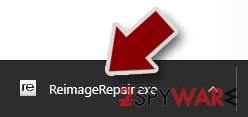
- If User Account Control (UAC) shows up, select Yes
- Press Install and wait till the program finishes the installation process

- The analysis of your machine will begin immediately

- Once complete, check the results – they will be listed in the Summary
- You can now click on each of the issues and fix them manually
- If you see many problems that you find difficult to fix, we recommend you purchase the license and fix them automatically.

By employing FortectIntego, you would not have to worry about future computer issues, as most of them could be fixed quickly by performing a full system scan at any time. Most importantly, you could avoid the tedious process of Windows reinstallation in case things go very wrong due to one reason or another.
Restore Windows "hosts" file to its original state
Some ransomware might modify Windows hosts file in order to prevent users from accessing certain websites online. For example, Djvu ransomware variants add dozens of entries containing URLs of security-related websites, such as 2-spyware.com. Each of the entries means that users will not be able to access the listed web addresses and will receive an error instead.
Here's an example of “hosts” file entries that were injected by ransomware:
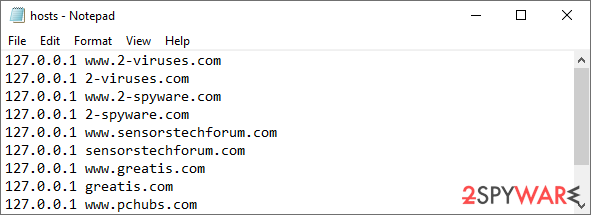
In order to restore your ability to access all websites without restrictions, you should either delete the file (Windows will automatically recreate it) or remove all the malware-created entries. If you have never touched the “hosts” file before, you should simply delete it by marking it and pressing Shift + Del on your keyboard. For that, navigate to the following location:
C:\\Windows\\System32\\drivers\\etc\\

Restore files using data recovery software
Since many users do not prepare proper data backups prior to being attacked by ransomware, they might often lose access to their files permanently. Paying criminals is also very risky, as they might not fulfill the promises and never send back the required decryption tool.
While this might sound terrible, not all is lost – data recovery software might be able to help you in some situations (it highly depends on the encryption algorithm used, whether ransomware managed to complete the programmed tasks, etc.). Since there are thousands of different ransomware strains, it is immediately impossible to tell whether third-party software will work for you.
Therefore, we suggest trying regardless of which ransomware attacked your computer. Before you begin, several pointers are important while dealing with this situation:
- Since the encrypted data on your computer might permanently be damaged by security or data recovery software, you should first make backups of it – use a USB flash drive or another storage.
- Only attempt to recover your files using this method after you perform a scan with anti-malware software.
Install data recovery software
- Download Data Recovery Pro.
- Double-click the installer to launch it.

- Follow on-screen instructions to install the software.

- As soon as you press Finish, you can use the app.
- Select Everything or pick individual folders where you want the files to be recovered from.
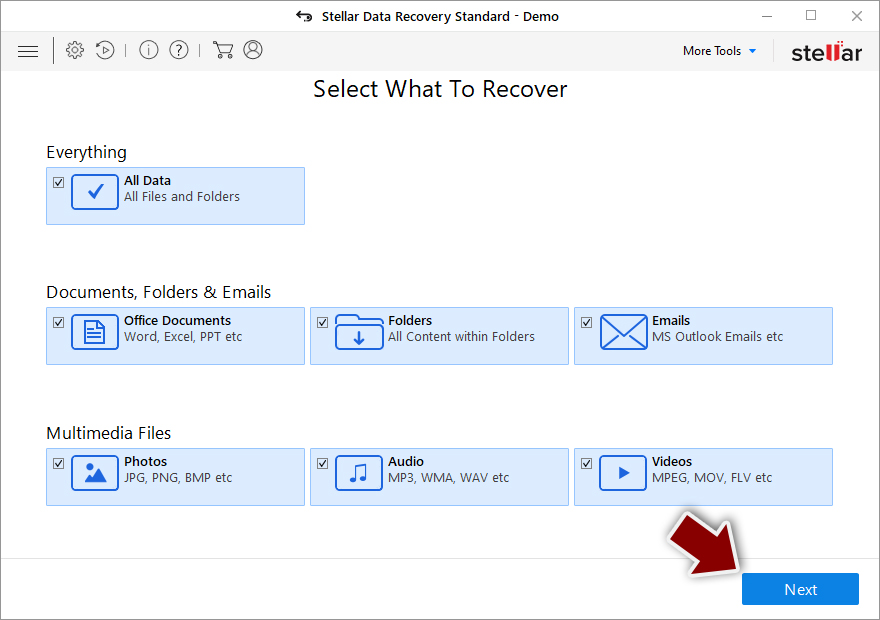
- Press Next.
- At the bottom, enable Deep scan and pick which Disks you want to be scanned.
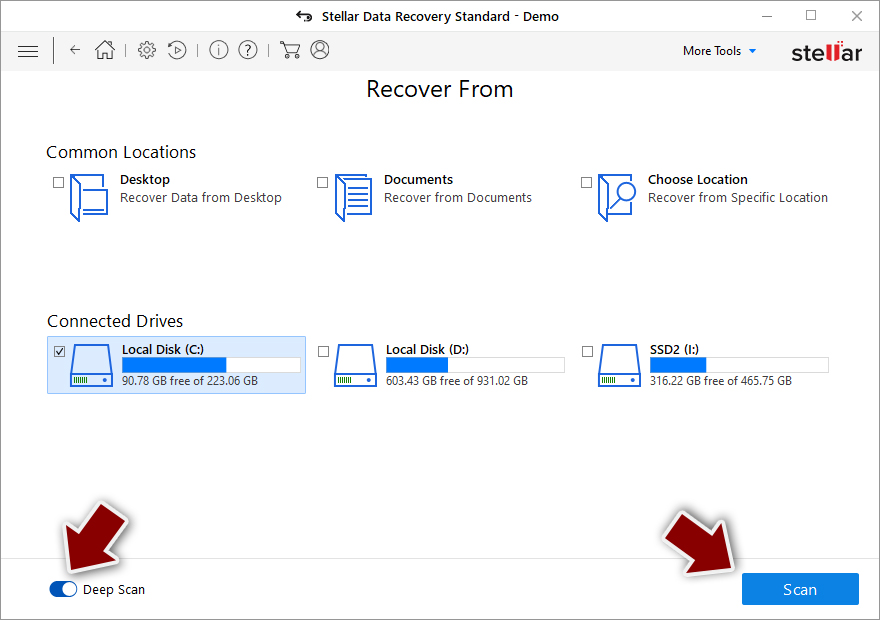
- Press Scan and wait till it is complete.

- You can now pick which folders/files to recover – don't forget you also have the option to search by the file name!
- Press Recover to retrieve your files.

Use Emsisoft decrytor for Djvu/STOP
If your computer got infected with one of the Djvu variants, you should try using Emsisoft decryptor for Djvu/STOP. It is important to mention that this tool will not work for everyone – it only works if data was locked with an offline ID due to malware failing to communicate with its remote servers.
Even if your case meets this condition, somebody from the victims has to pay criminals, retrieve an offline key, and then share it with security researchers at Emsisoft. As a result, you might not be able to restore the encrypted files immediately. Thus, if the decryptor says your data was locked with an offline ID but cannot be recovered currently, you should try later. You also need to upload a set of files – one encrypted and a healthy one to the company's servers before you proceed.
- Download the app from the official Emsisoft website.
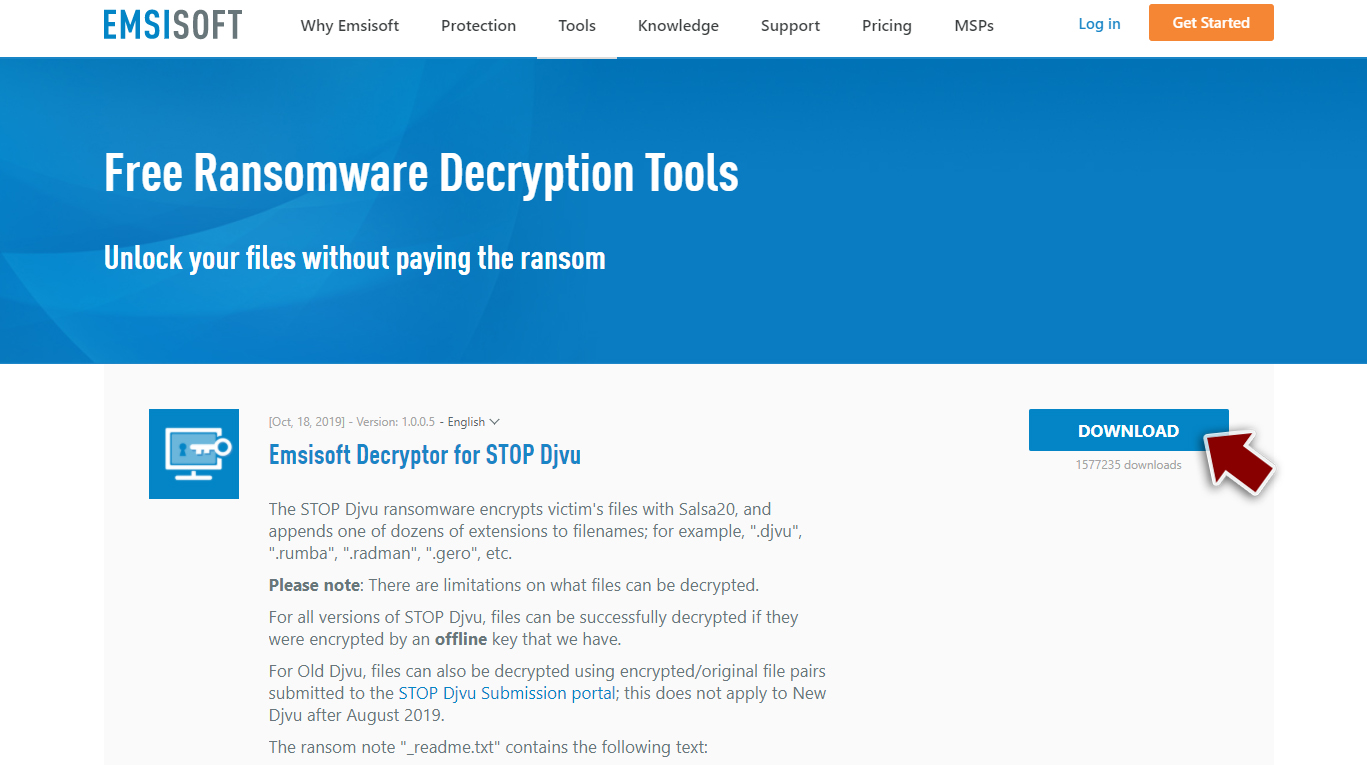
- After pressing Download button, a small pop-up at the bottom, titled decrypt_STOPDjvu.exe should show up – click it.

- If User Account Control (UAC) message shows up, press Yes.
- Agree to License Terms by pressing Yes.
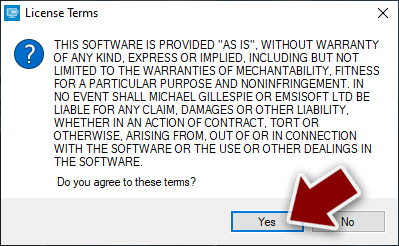
- After Disclaimer shows up, press OK.
- The tool should automatically populate the affected folders, although you can also do it by pressing Add folder at the bottom.
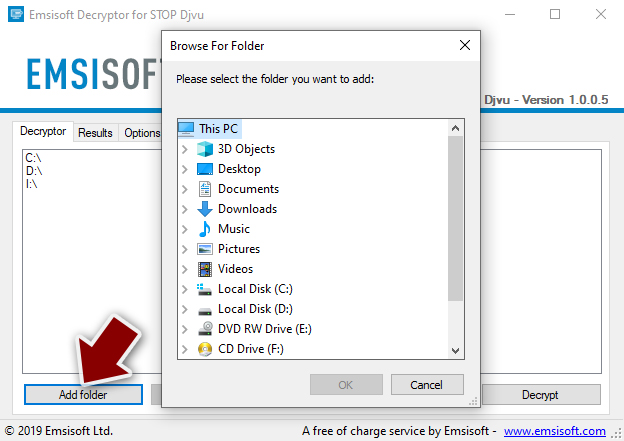
- Press Decrypt.
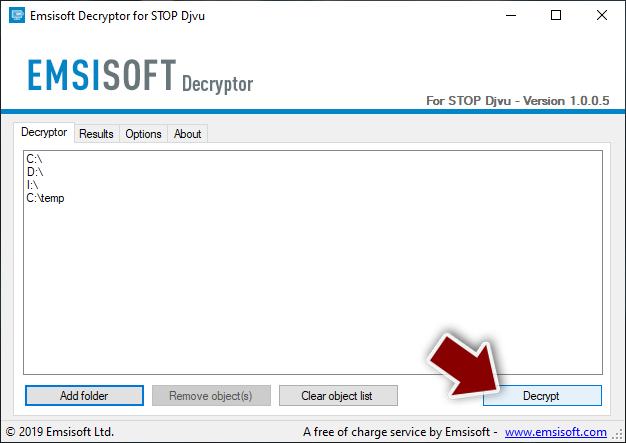
From here, there are three available outcomes:
- “Decrypted!” will be shown under files that were decrypted successfully – they are now usable again.
- “Error: Unable to decrypt file with ID:” means that the keys for this version of the virus have not yet been retrieved, so you should try later.
- “This ID appears to be an online ID, decryption is impossible” – you are unable to decrypt files with this tool.
Create data backups to avoid file loss in the future
One of the many countermeasures for home users against ransomware is data backups. Even if your Windows get corrupted, you can reinstall everything from scratch and retrieve files from backups with minimal losses overall. Most importantly, you would not have to pay cybercriminals and risk your money as well.
Therefore, if you have already dealt with a ransomware attack, we strongly advise you to prepare backups for future use. There are two options available to you:
- Backup on a physical external drive, such as a USB flash drive or external HDD.
- Use cloud storage services.
The first method is not that convenient, however, as backups need to constantly be updated manually – although it is very reliable. Therefore, we highly advise choosing cloud storage instead – it is easy to set up and efficient to sustain. The problem with it is that storage space is limited unless you want to pay for the subscription.
Using Microsoft OneDrive
OneDrive is a built-in tool that comes with every modern Windows version. By default, you get 5 GB of storage that you can use for free. You can increase that storage space, but for a price. Here's how to setup backups for OneDrive:
- Click on the OneDrive icon within your system tray.
- Select Help & Settings > Settings.
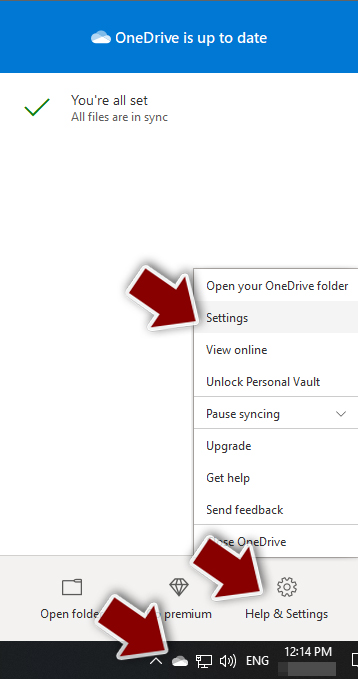
- If you don't see your email under the Account tab, you should click Add an account and proceed with the on-screen instructions to set yourself up.

- Once done, move to the Backup tab and click Manage backup.
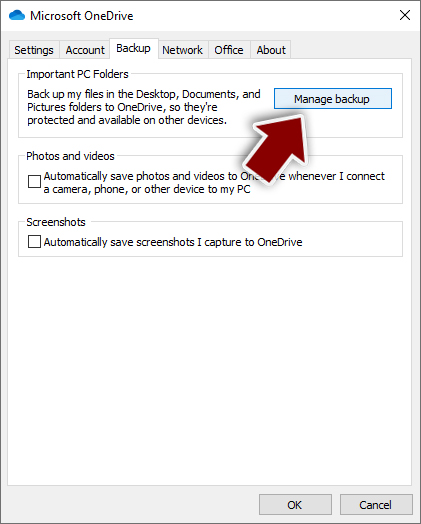
- Select Desktop, Documents, and Pictures, or a combination of whichever folders you want to backup.
- Press Start backup.
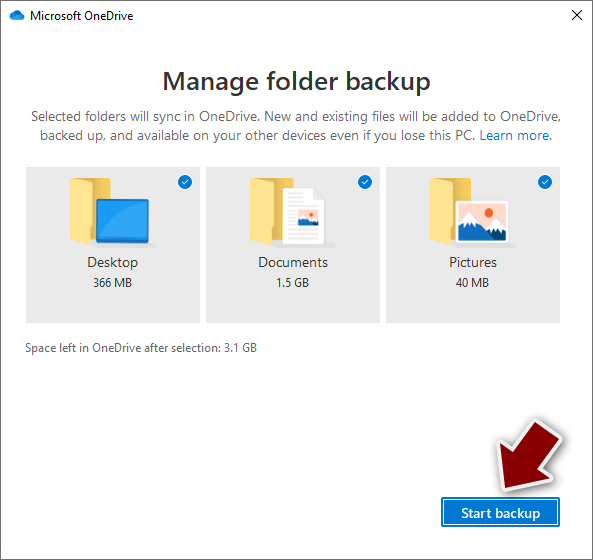
After this, all the files that are imported into the above-mentioned folders will be automatically backed for you. If you want to add other folders or files, you have to do that manually. For that, open File Explorer by pressing Win + E on your keyboard, and then click on the OneDrive icon. You should drag and drop folders you want to backup (or you can use Copy/Paste as well).
Using Google Drive
Google Drive is another great solution for free backups. The good news is that you get as much as 15GB for free by choosing this storage. There are also paid versions available, with significantly more storage to choose from.
You can access Google Drive via the web browser or use a desktop app you can download on the official website. If you want your files to be synced automatically, you will have to download the app, however.
- Download the Google Drive app installer and click on it.

- Wait a few seconds for it to be installed.
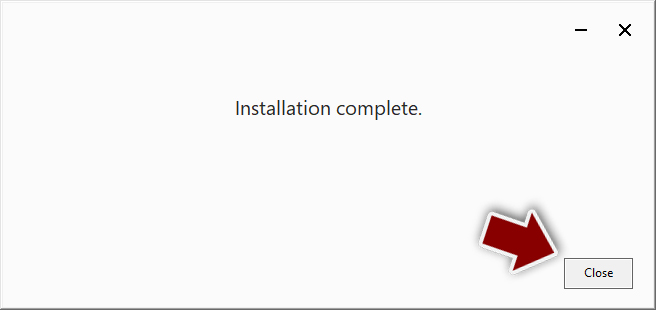
- Now click the arrow within your system tray – you should see Google Drive icon there, click it once.
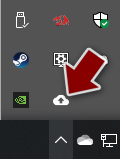
- Click Get Started.
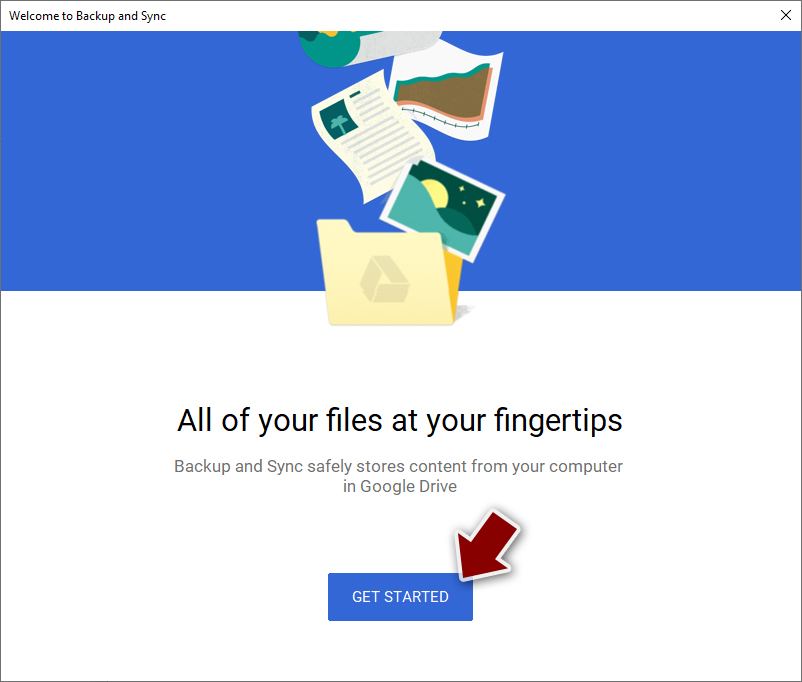
- Enter all the required information – your email/phone, and password.
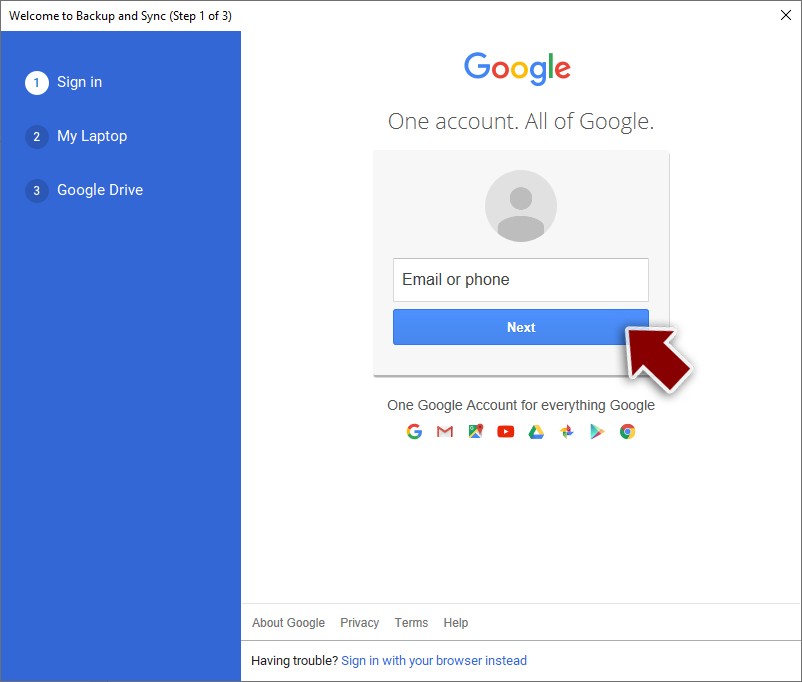
- Now pick what you want to sync and backup. You can click on Choose Folder to add additional folders to the list.
- Once done, pick Next.
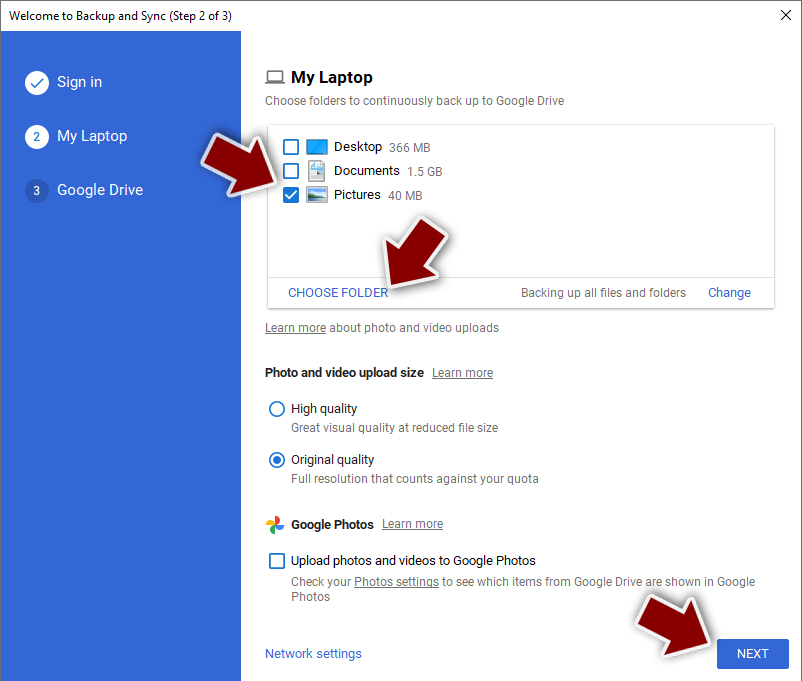
- Now you can select to sync items to be visible on your computer.
- Finally, press Start and wait till the sync is complete. Your files are now being backed up.
Manual removal using Safe Mode
Important! →
Manual removal guide might be too complicated for regular computer users. It requires advanced IT knowledge to be performed correctly (if vital system files are removed or damaged, it might result in full Windows compromise), and it also might take hours to complete. Therefore, we highly advise using the automatic method provided above instead.
Step 1. Access Safe Mode with Networking
Manual malware removal should be best performed in the Safe Mode environment.
Windows 7 / Vista / XP
- Click Start > Shutdown > Restart > OK.
- When your computer becomes active, start pressing F8 button (if that does not work, try F2, F12, Del, etc. – it all depends on your motherboard model) multiple times until you see the Advanced Boot Options window.
- Select Safe Mode with Networking from the list.

Windows 10 / Windows 8
- Right-click on Start button and select Settings.

- Scroll down to pick Update & Security.
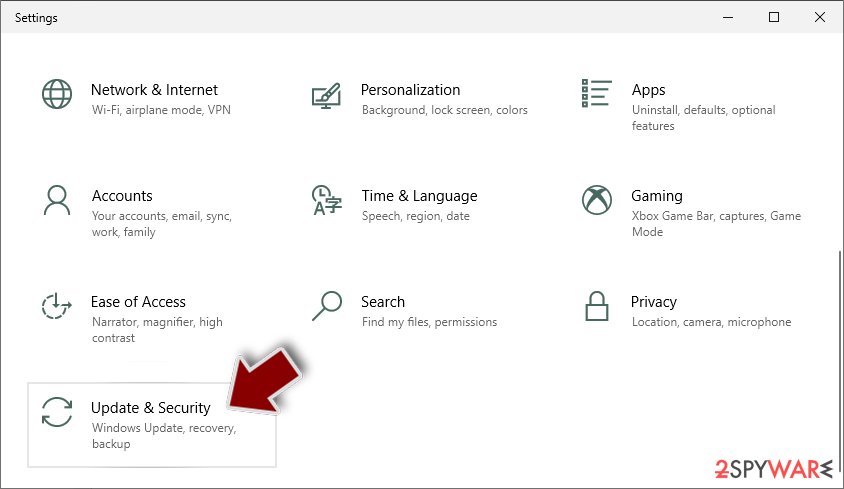
- On the left side of the window, pick Recovery.
- Now scroll down to find Advanced Startup section.
- Click Restart now.
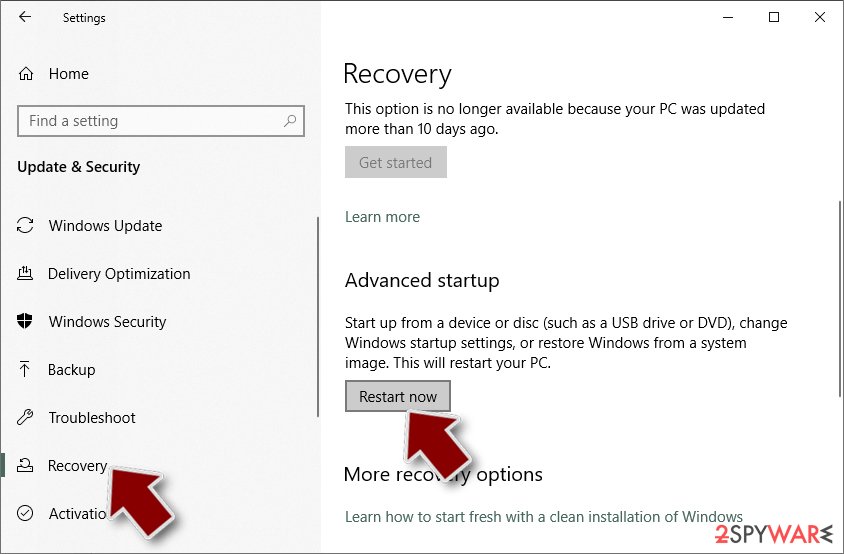
- Select Troubleshoot.
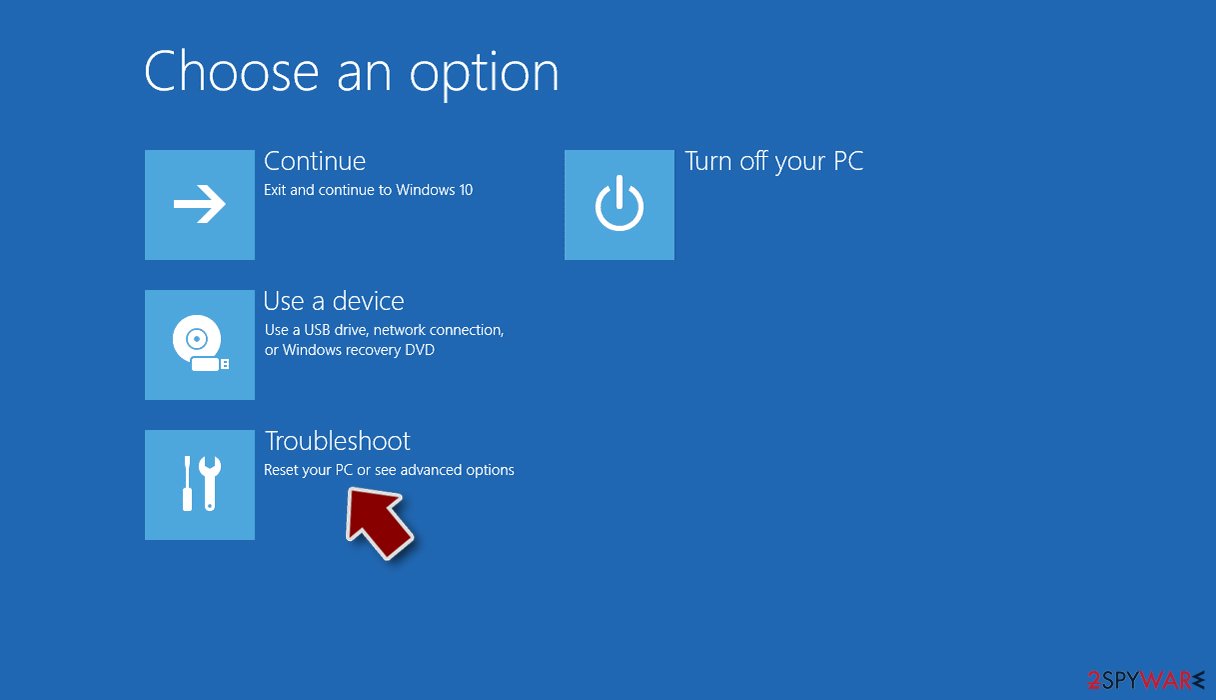
- Go to Advanced options.
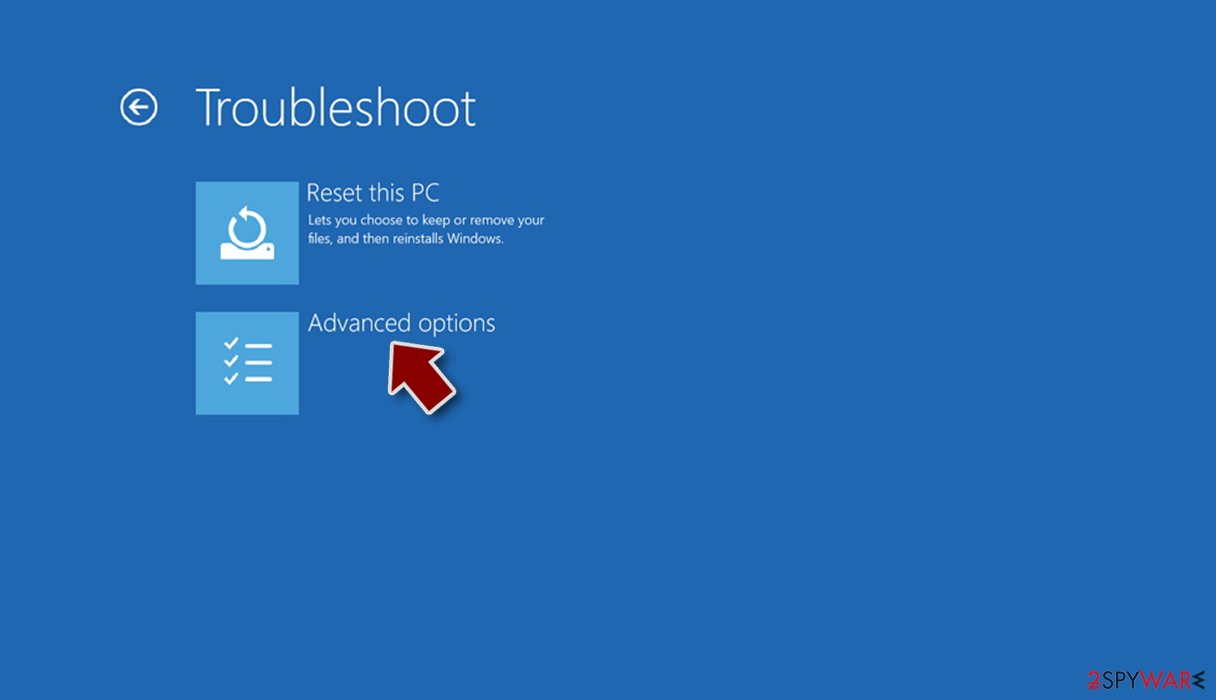
- Select Startup Settings.
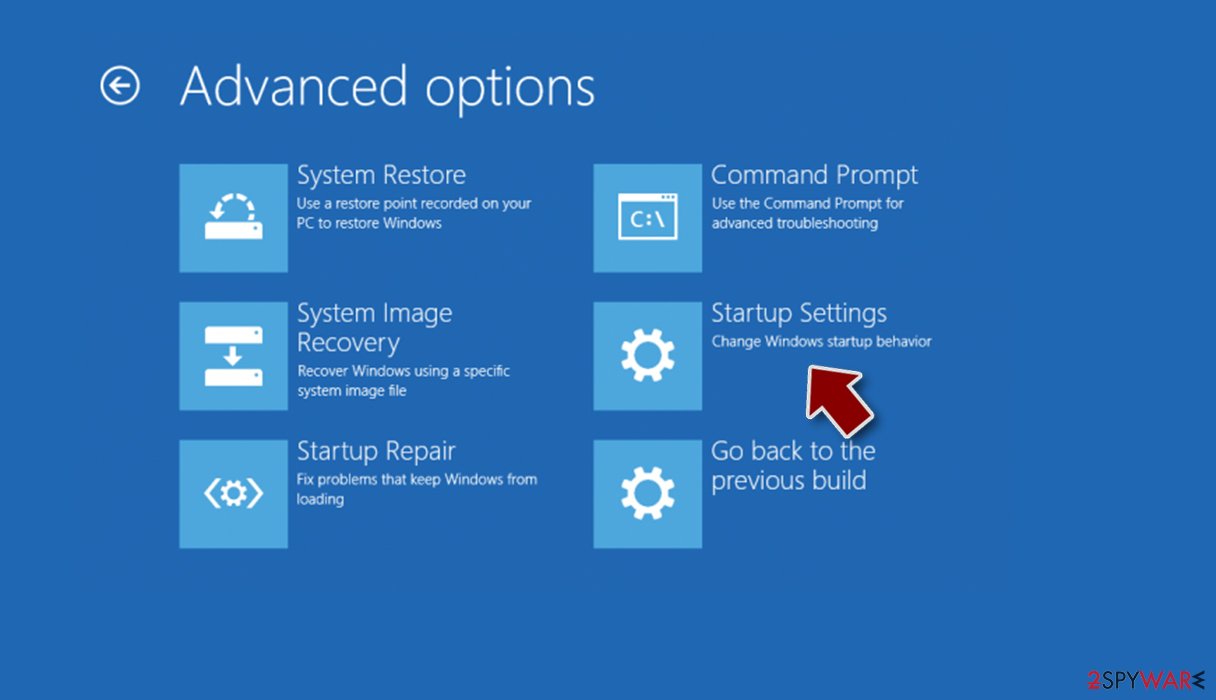
- Press Restart.
- Now press 5 or click 5) Enable Safe Mode with Networking.
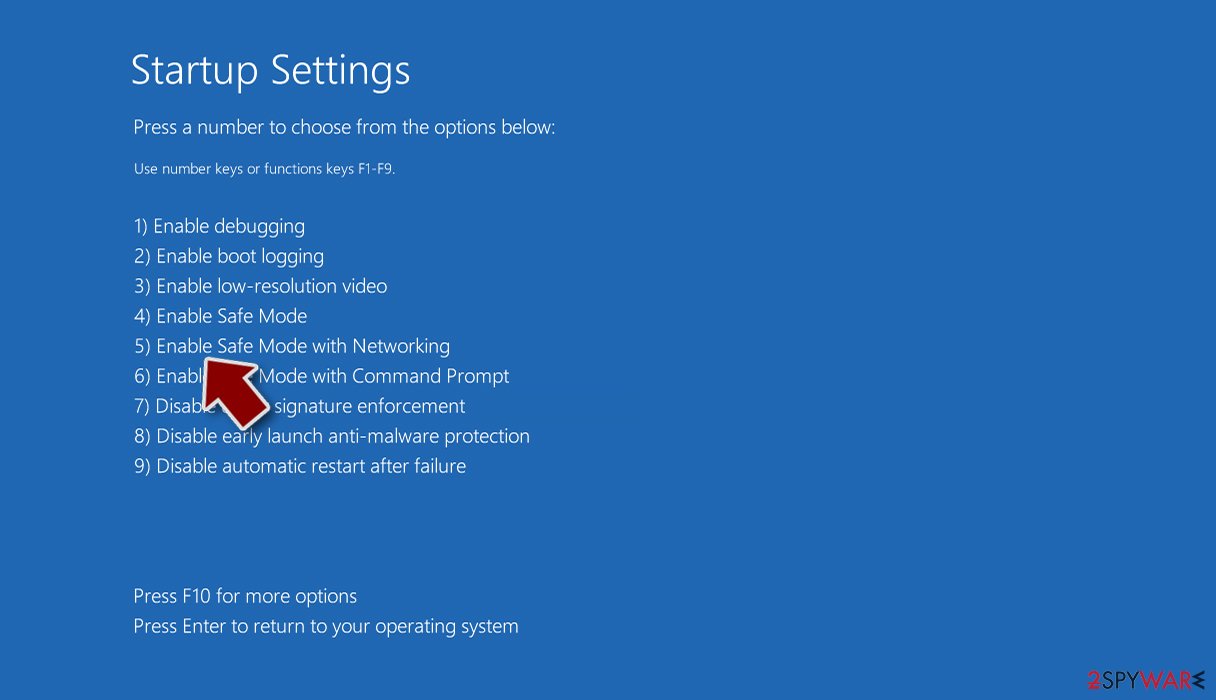
Step 2. Shut down suspicious processes
Windows Task Manager is a useful tool that shows all the processes running in the background. If malware is running a process, you need to shut it down:
- Press Ctrl + Shift + Esc on your keyboard to open Windows Task Manager.
- Click on More details.
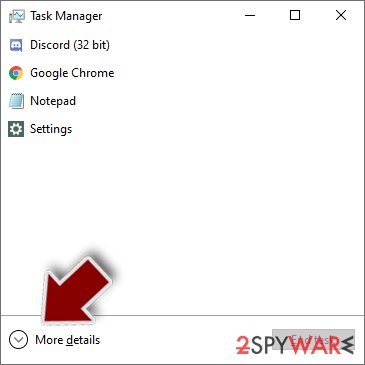
- Scroll down to Background processes section, and look for anything suspicious.
- Right-click and select Open file location.
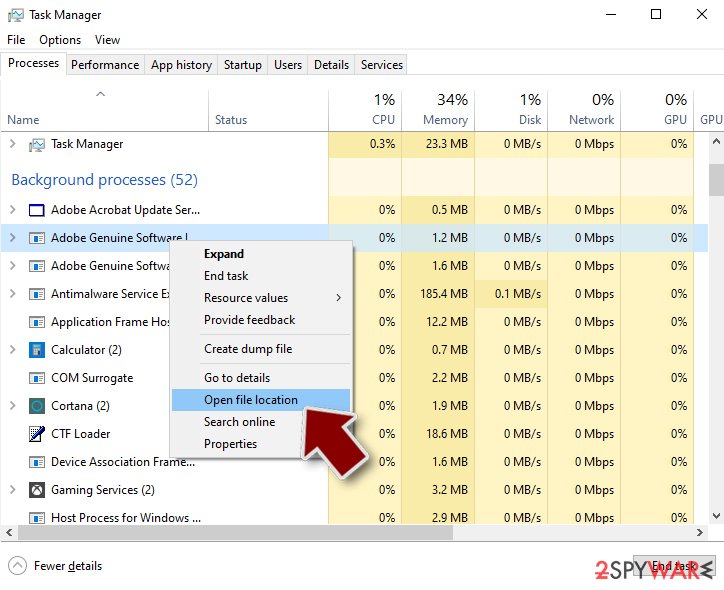
- Go back to the process, right-click and pick End Task.
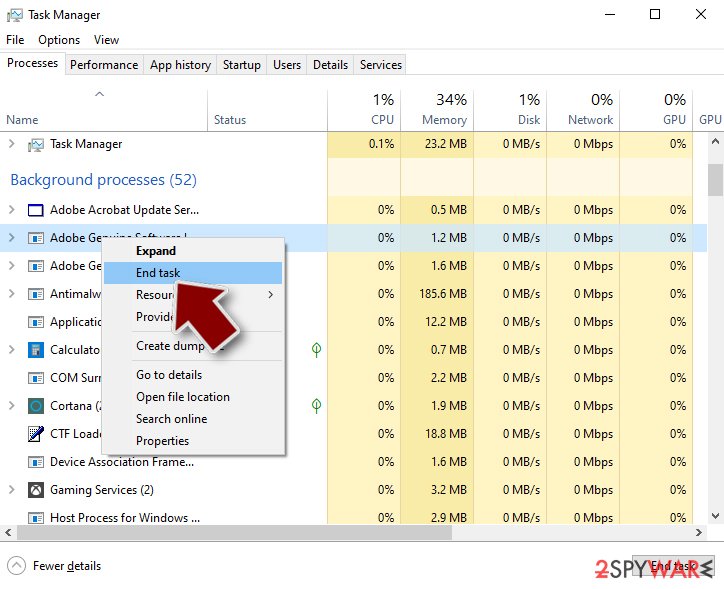
- Delete the contents of the malicious folder.
Step 3. Check program Startup
- Press Ctrl + Shift + Esc on your keyboard to open Windows Task Manager.
- Go to Startup tab.
- Right-click on the suspicious program and pick Disable.
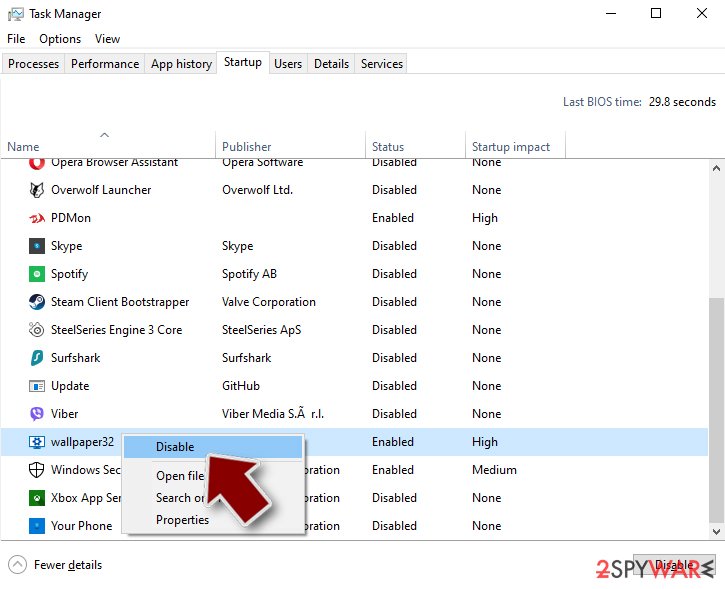
Step 4. Delete virus files
Malware-related files can be found in various places within your computer. Here are instructions that could help you find them:
- Type in Disk Cleanup in Windows search and press Enter.
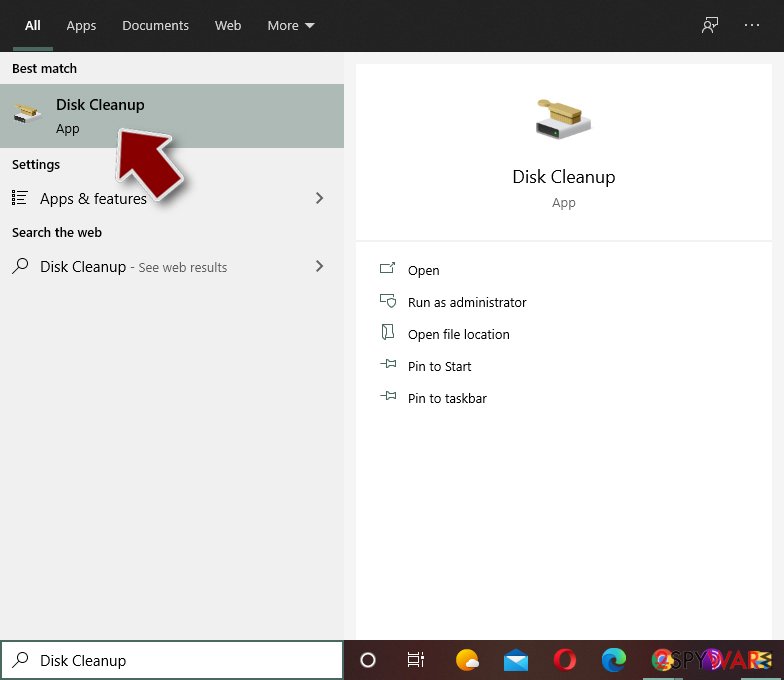
- Select the drive you want to clean (C: is your main drive by default and is likely to be the one that has malicious files in).
- Scroll through the Files to delete list and select the following:
Temporary Internet Files
Downloads
Recycle Bin
Temporary files - Pick Clean up system files.
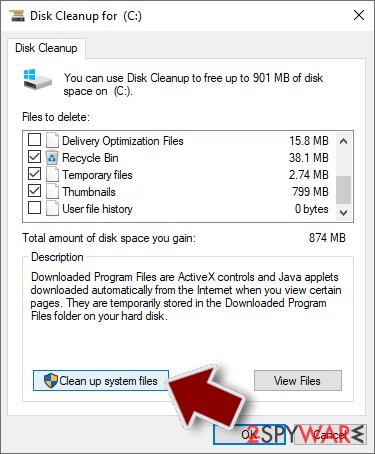
- You can also look for other malicious files hidden in the following folders (type these entries in Windows Search and press Enter):
%AppData%
%LocalAppData%
%ProgramData%
%WinDir%
After you are finished, reboot the PC in normal mode.
Finally, you should always think about the protection of crypto-ransomwares. In order to protect your computer from Pcqq and other ransomwares, use a reputable anti-spyware, such as FortectIntego, SpyHunter 5Combo Cleaner or Malwarebytes
How to prevent from getting ransomware
Access your website securely from any location
When you work on the domain, site, blog, or different project that requires constant management, content creation, or coding, you may need to connect to the server and content management service more often. The best solution for creating a tighter network could be a dedicated/fixed IP address.
If you make your IP address static and set to your device, you can connect to the CMS from any location and do not create any additional issues for the server or network manager that needs to monitor connections and activities. VPN software providers like Private Internet Access can help you with such settings and offer the option to control the online reputation and manage projects easily from any part of the world.
Recover files after data-affecting malware attacks
While much of the data can be accidentally deleted due to various reasons, malware is one of the main culprits that can cause loss of pictures, documents, videos, and other important files. More serious malware infections lead to significant data loss when your documents, system files, and images get encrypted. In particular, ransomware is is a type of malware that focuses on such functions, so your files become useless without an ability to access them.
Even though there is little to no possibility to recover after file-locking threats, some applications have features for data recovery in the system. In some cases, Data Recovery Pro can also help to recover at least some portion of your data after data-locking virus infection or general cyber infection.
- ^ A new variant STOP Ransomware. Twitter. Social media.
- ^ How pirates hook gamers. Kaspersky. Daily news.
- ^ Virus detection rate. VirsuTotal. Online malware scanner.
